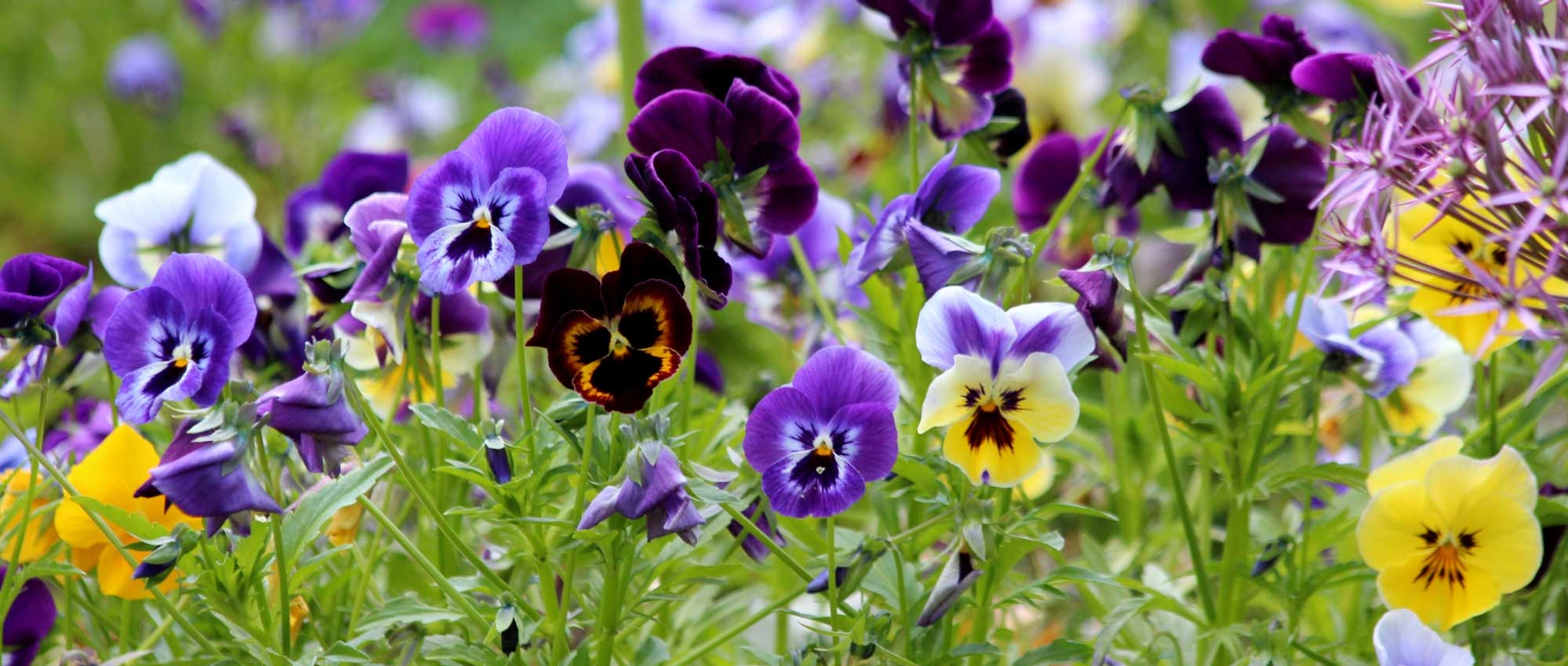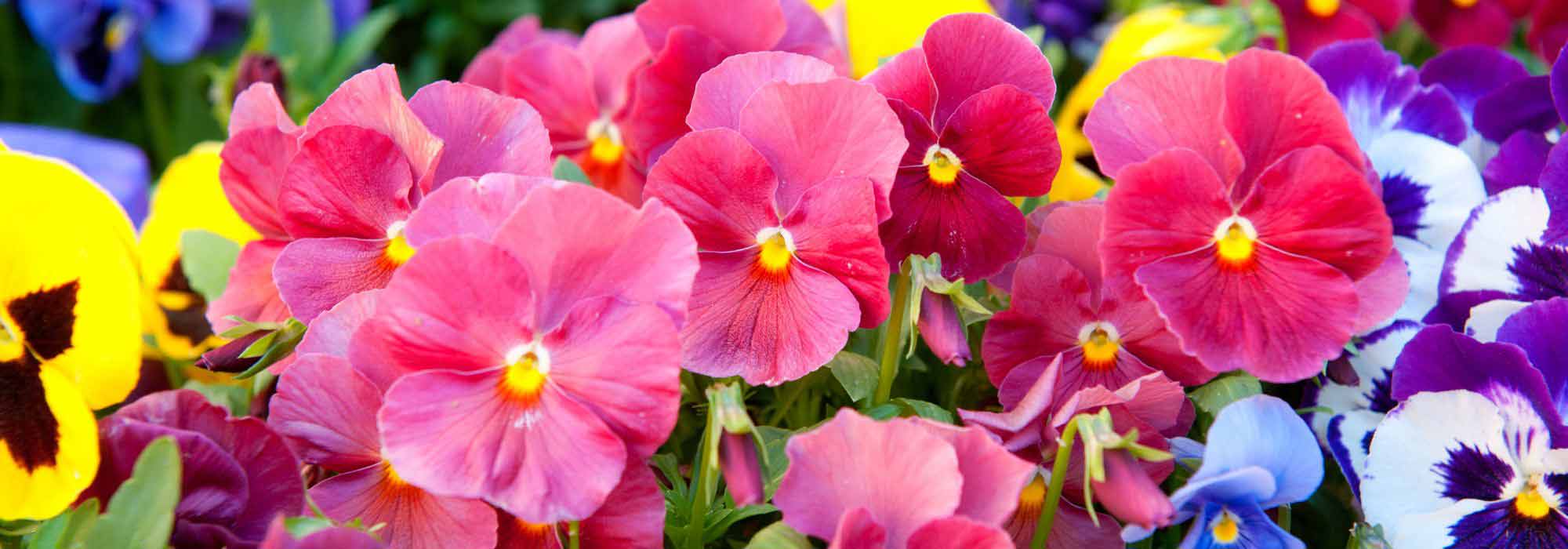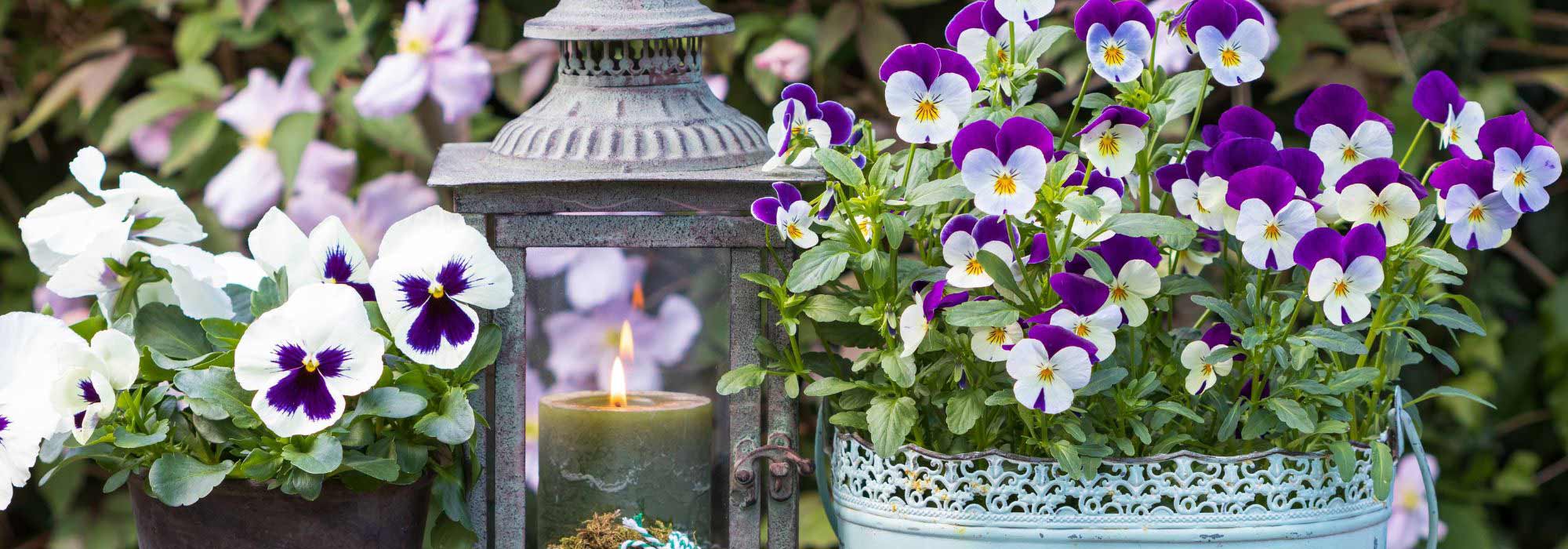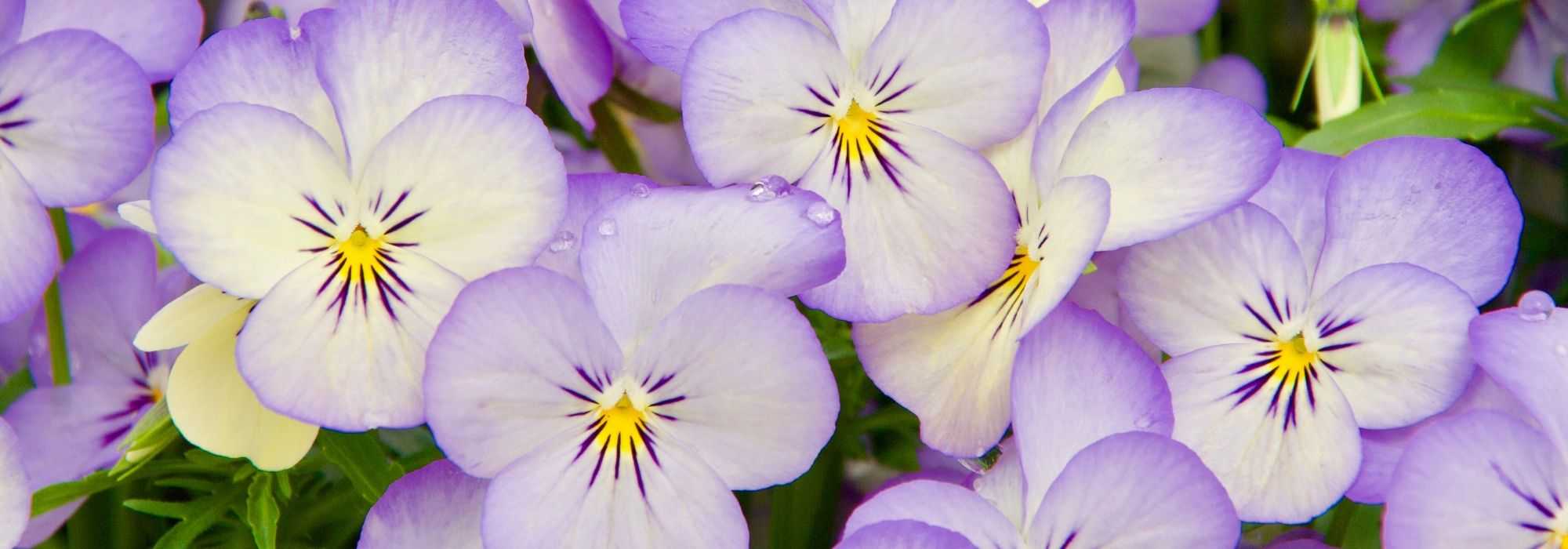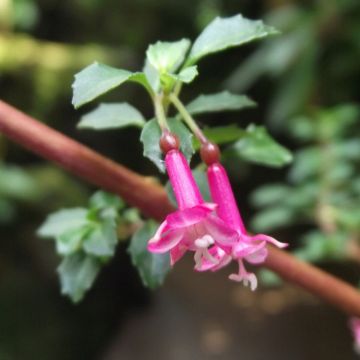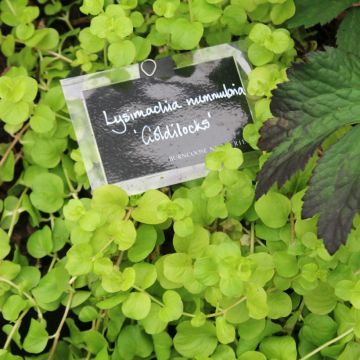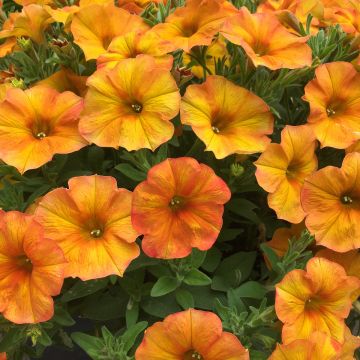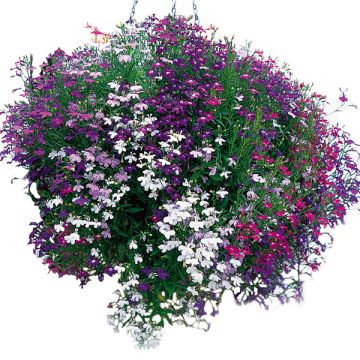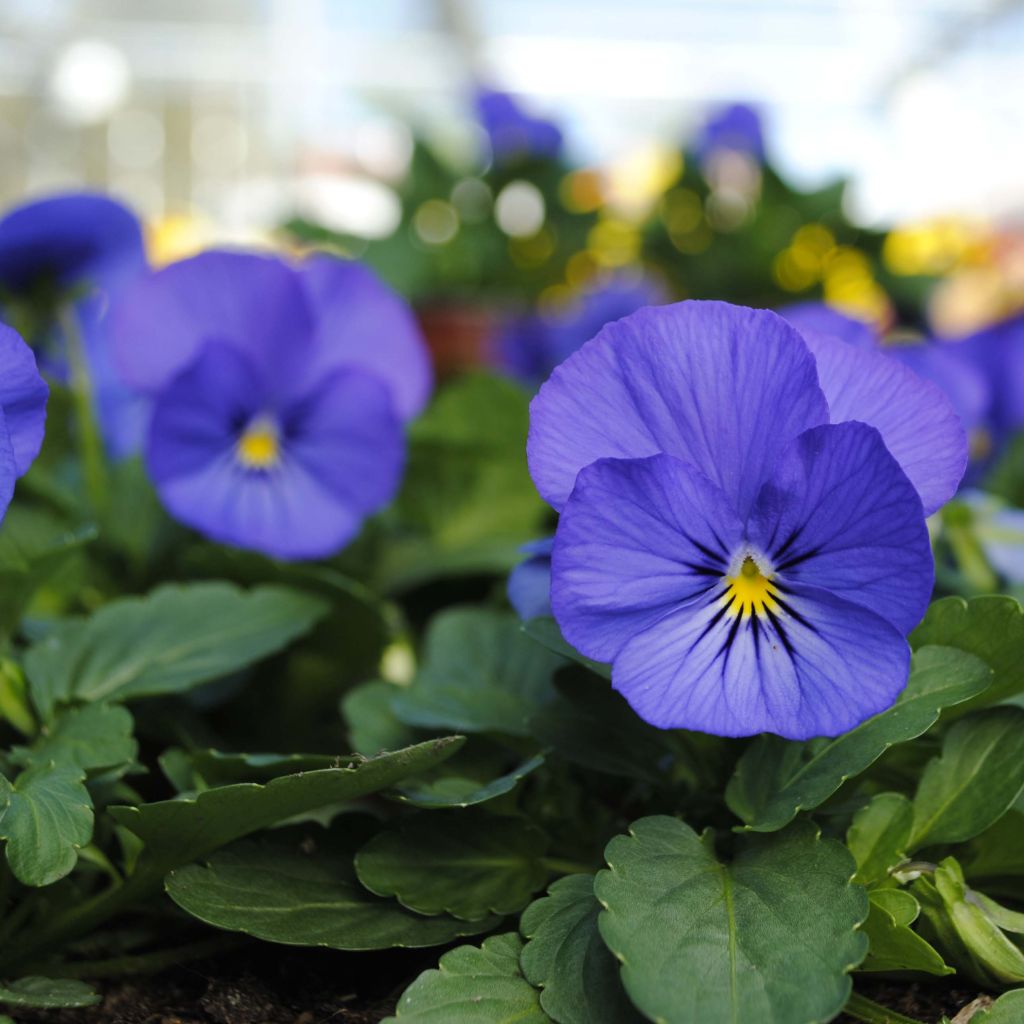

Violette cornue Sorbet XP True Blue Mini-motte - Viola cornuta
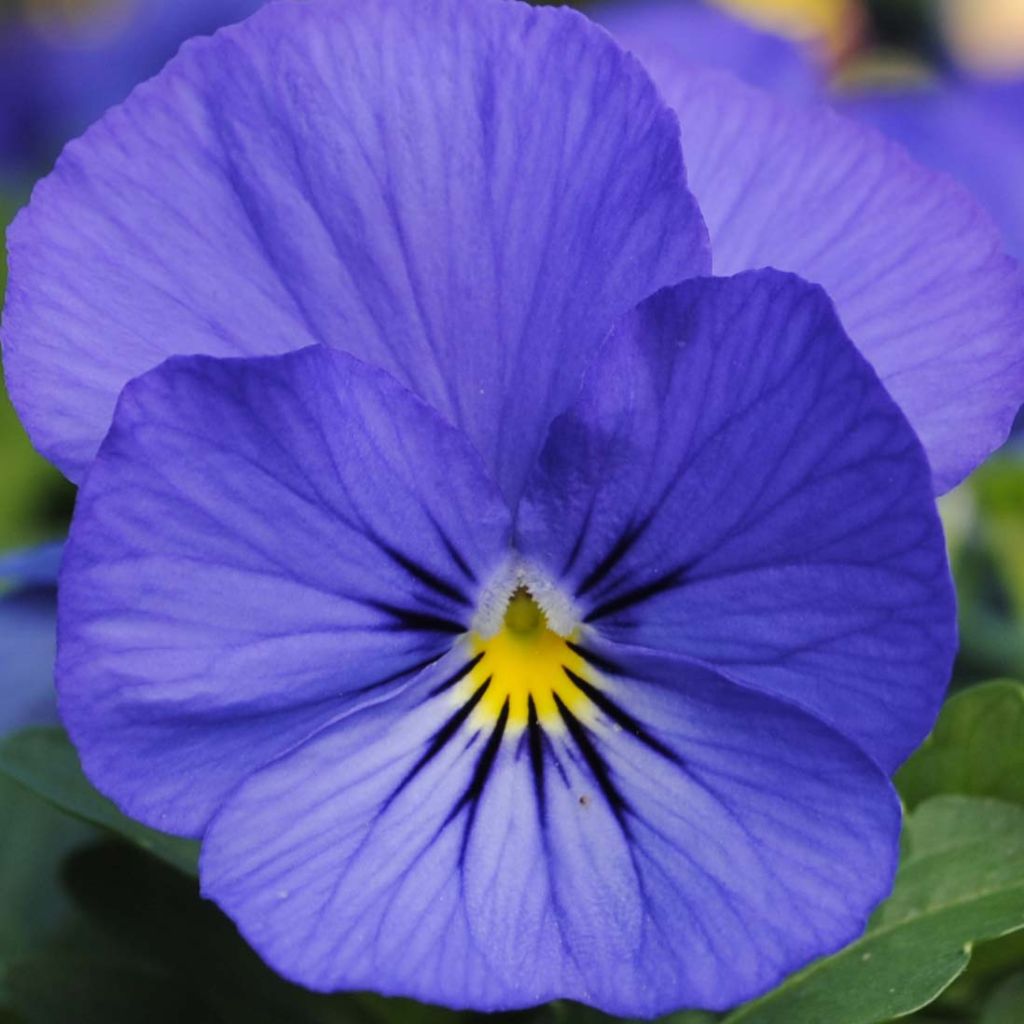

Violette cornue Sorbet XP True Blue Mini-motte - Viola cornuta
Viola cornuta Sorbet XP True Blue - Horned pansy
Viola cornuta Sorbet Xp True Blue
Horned pansy
The plants are so tiny that I don't think I'll be able to plant them before spring...
Evelyne, 18/12/2024
Special offer!
Receive a €20 voucher for any order over €90 (excluding delivery costs, credit notes, and plastic-free options)!
1- Add your favorite plants to your cart.
2- Once you have reached €90, confirm your order (you can even choose the delivery date!).
3- As soon as your order is shipped, you will receive an email containing your voucher code, valid for 3 months (90 days).
Your voucher is unique and can only be used once, for any order with a minimum value of €20, excluding delivery costs.
Can be combined with other current offers, non-divisible and non-refundable.
Why not try an alternative variety in stock?
View all →This plant carries a 6 months recovery warranty
More information
We guarantee the quality of our plants for a full growing cycle, and will replace at our expense any plant that fails to recover under normal climatic and planting conditions.

Would this plant suit my garden?
Set up your Plantfit profile →
Description
Viola cornuta 'Sorbet XP True Blue' is an exceptional horned viola with intense cobalt blue flowers adorned with delicate dark blue veins. They bloom early in the season and for long months. These vigorous plants go beautifully with spring bulbs and bloom perfectly at the base of asters. In rockeries, they quickly spread their dark and evergreen carpet. They create charming borders and opulent pots. This biennial is grown in humus-rich soil, in partial shade or dappled sunlight.
Horned pansies belong to the Violaceae family. They grow wild in the Pyrenees. They are low-growing perennial plants that have given rise to numerous hybrids. Often crossed with Viola tricolour (wild pansy), their most famous descendants are garden pansies. This variety is the latest in the XP series. It is an herbaceous ground-covering plant, 10 to 15cm (4 to 6in) tall when in bloom, with evergreen, dark green, ovate and lobed leaves, forming a dense, spreading tuft. It produces flowers from spring to autumn. Its remarkably bright flowers display an almost uniform blue colour, highlighted by indigo stripes radiating from a small bright yellow centre. The flowers are almost shaped like small pansies, but their petals are arranged differently. The two upper ones are upright, the other three are inclined downwards.
These viola are perfect for beds, borders, pots, and balconies. They look wonderful with other spring-flowering plants, such as forget-me-nots, dwarf daffodils, daisies, primroses, botanical tulips, and summer and autumn asters. The flowers are edible, so use them to decorate your plates, or even add some to salads to give them a touch of colour. The magnificent blue of this variety will go well with the vibrant orange of XP Orange Deep or the yellow of XP Yellow. Sorbet XP White Blotch will bring the necessary black and white touch to the chromatic balance of the whole.
Please be aware that our young plug plants are professional products intended for experienced gardeners. Upon receipt, transplant them as soon as possible in pots, flower boxes, or directly in flower beds.
Viola cornuta Sorbet XP True Blue - Horned pansy in pictures
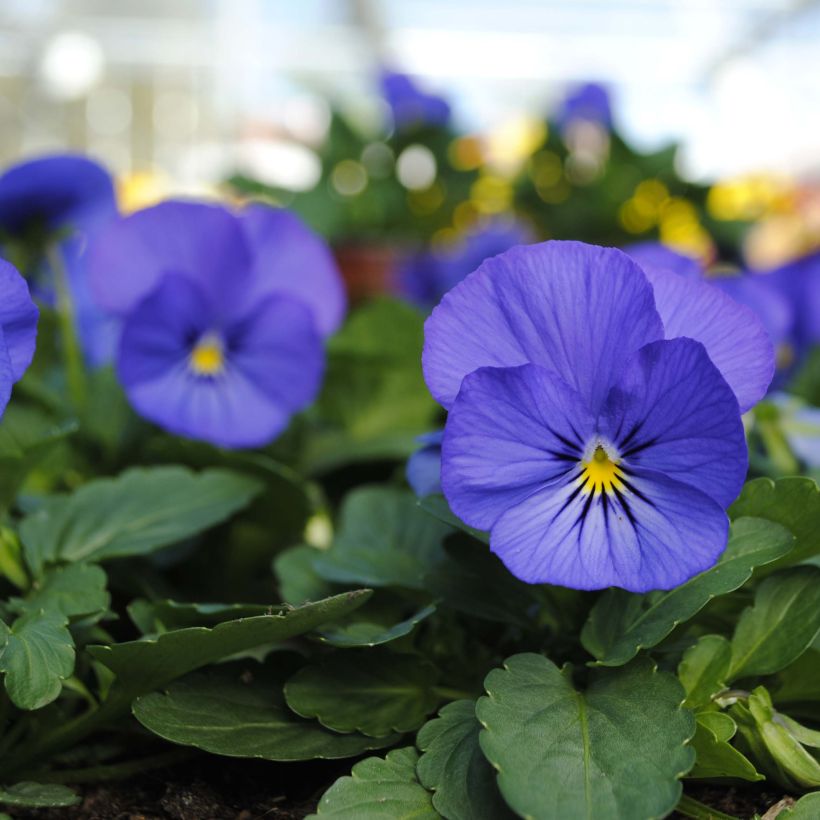

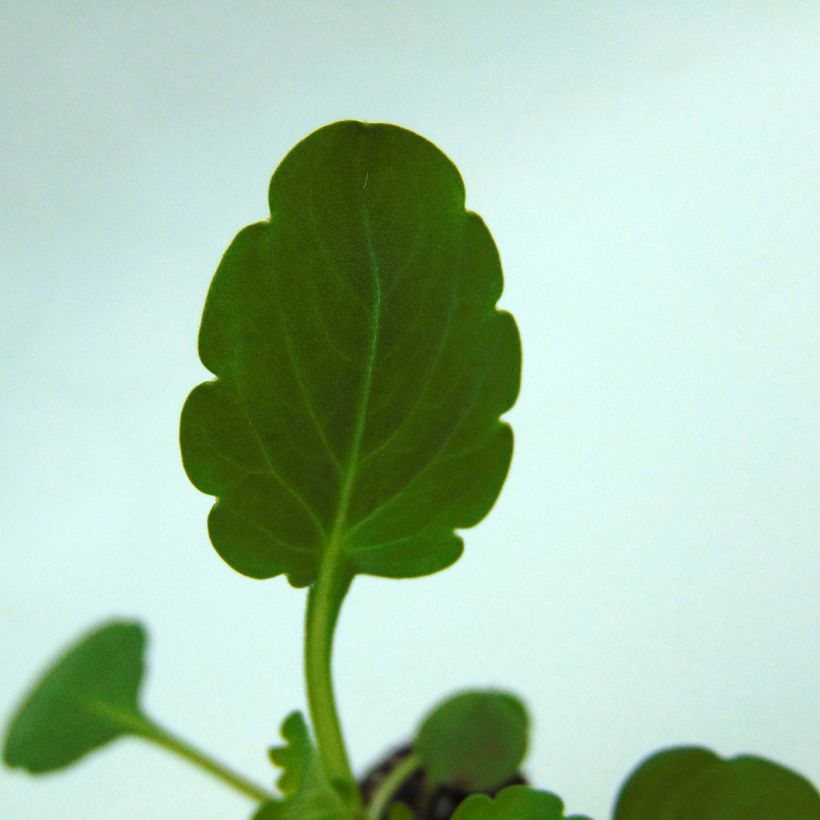

Flowering
Foliage
Plant habit
Botanical data
Viola
cornuta
Sorbet Xp True Blue
Violaceae
Horned pansy
Cultivar or hybrid
Other Pansies and violas
View all →Planting and care
They appreciate light soil that is rich in humus. It should be moist but well-drained, as they fear excessive moisture in winter. In heavy soil, add a bit of sand to improve drainage.
Plant in a non-scorching sunny location or under light shade.
They are fast-growing and produce an abundance of blooms, making them hungry plants. We recommend feeding them with a liquid fertiliser once or twice a week during the growing season. Water regularly but without excess. Remove faded flowers to encourage new blooms.
Planting period
Intended location
Care
Planting & care advice
-
, onOrder confirmed
Reply from on Promesse de fleurs
Similar products
Haven't found what you were looking for?
Hardiness is the lowest winter temperature a plant can endure without suffering serious damage or even dying. However, hardiness is affected by location (a sheltered area, such as a patio), protection (winter cover) and soil type (hardiness is improved by well-drained soil).

Photo Sharing Terms & Conditions
In order to encourage gardeners to interact and share their experiences, Promesse de fleurs offers various media enabling content to be uploaded onto its Site - in particular via the ‘Photo sharing’ module.
The User agrees to refrain from:
- Posting any content that is illegal, prejudicial, insulting, racist, inciteful to hatred, revisionist, contrary to public decency, that infringes on privacy or on the privacy rights of third parties, in particular the publicity rights of persons and goods, intellectual property rights, or the right to privacy.
- Submitting content on behalf of a third party;
- Impersonate the identity of a third party and/or publish any personal information about a third party;
In general, the User undertakes to refrain from any unethical behaviour.
All Content (in particular text, comments, files, images, photos, videos, creative works, etc.), which may be subject to property or intellectual property rights, image or other private rights, shall remain the property of the User, subject to the limited rights granted by the terms of the licence granted by Promesse de fleurs as stated below. Users are at liberty to publish or not to publish such Content on the Site, notably via the ‘Photo Sharing’ facility, and accept that this Content shall be made public and freely accessible, notably on the Internet.
Users further acknowledge, undertake to have ,and guarantee that they hold all necessary rights and permissions to publish such material on the Site, in particular with regard to the legislation in force pertaining to any privacy, property, intellectual property, image, or contractual rights, or rights of any other nature. By publishing such Content on the Site, Users acknowledge accepting full liability as publishers of the Content within the meaning of the law, and grant Promesse de fleurs, free of charge, an inclusive, worldwide licence for the said Content for the entire duration of its publication, including all reproduction, representation, up/downloading, displaying, performing, transmission, and storage rights.
Users also grant permission for their name to be linked to the Content and accept that this link may not always be made available.
By engaging in posting material, Users consent to their Content becoming automatically accessible on the Internet, in particular on other sites and/or blogs and/or web pages of the Promesse de fleurs site, including in particular social pages and the Promesse de fleurs catalogue.
Users may secure the removal of entrusted content free of charge by issuing a simple request via our contact form.
The flowering period indicated on our website applies to countries and regions located in USDA zone 8 (France, the United Kingdom, Ireland, the Netherlands, etc.)
It will vary according to where you live:
- In zones 9 to 10 (Italy, Spain, Greece, etc.), flowering will occur about 2 to 4 weeks earlier.
- In zones 6 to 7 (Germany, Poland, Slovenia, and lower mountainous regions), flowering will be delayed by 2 to 3 weeks.
- In zone 5 (Central Europe, Scandinavia), blooming will be delayed by 3 to 5 weeks.
In temperate climates, pruning of spring-flowering shrubs (forsythia, spireas, etc.) should be done just after flowering.
Pruning of summer-flowering shrubs (Indian Lilac, Perovskia, etc.) can be done in winter or spring.
In cold regions as well as with frost-sensitive plants, avoid pruning too early when severe frosts may still occur.
The planting period indicated on our website applies to countries and regions located in USDA zone 8 (France, United Kingdom, Ireland, Netherlands).
It will vary according to where you live:
- In Mediterranean zones (Marseille, Madrid, Milan, etc.), autumn and winter are the best planting periods.
- In continental zones (Strasbourg, Munich, Vienna, etc.), delay planting by 2 to 3 weeks in spring and bring it forward by 2 to 4 weeks in autumn.
- In mountainous regions (the Alps, Pyrenees, Carpathians, etc.), it is best to plant in late spring (May-June) or late summer (August-September).
The harvesting period indicated on our website applies to countries and regions in USDA zone 8 (France, England, Ireland, the Netherlands).
In colder areas (Scandinavia, Poland, Austria...) fruit and vegetable harvests are likely to be delayed by 3-4 weeks.
In warmer areas (Italy, Spain, Greece, etc.), harvesting will probably take place earlier, depending on weather conditions.
The sowing periods indicated on our website apply to countries and regions within USDA Zone 8 (France, UK, Ireland, Netherlands).
In colder areas (Scandinavia, Poland, Austria...), delay any outdoor sowing by 3-4 weeks, or sow under glass.
In warmer climes (Italy, Spain, Greece, etc.), bring outdoor sowing forward by a few weeks.































